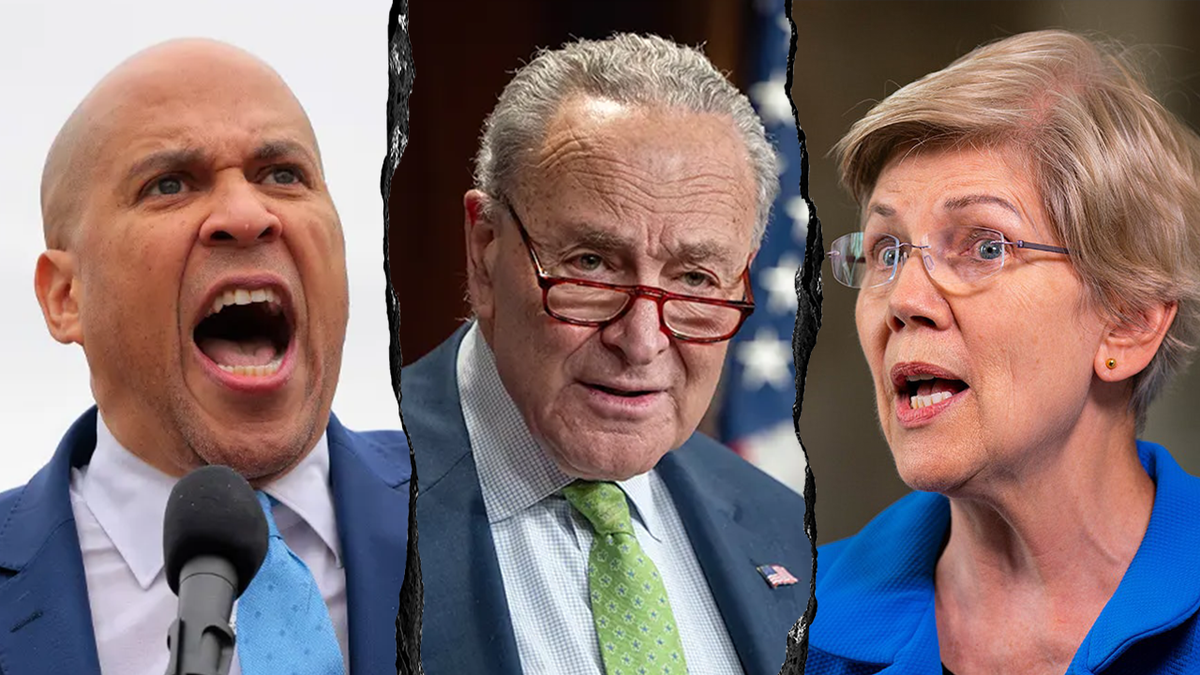
Democrats’ Unified Messaging Draws Fire Ahead of Trump’s Congressional Address
Ahead of President Donald Trump’s joint address to Congress, Senate Democrats launched a coordinated social media campaign, sparking a wave of criticism, particularly from conservative voices. The campaign featured numerous Democratic senators posting videos with strikingly similar scripts, all aimed at challenging Trump’s economic record and promises. The uniformity of the message, however, became a point of contention, with many accusing the Democrats of robotic adherence to pre-determined talking points.
The campaign’s core message centered on refuting Trump’s past claim of lowering prices "on day one" of his presidency. The videos typically began with a clip of Trump making this assertion, followed by a senator declaring, "Sh– That Ain’t True," before launching into a critique of the current economic climate. The senators argued that prices for essential goods like groceries, gas, and housing have risen during Trump’s tenure, and that he has failed to alleviate the financial burdens on American families.
Prominent figures like Senators Cory Booker, Elizabeth Warren, and Chuck Schumer spearheaded the effort, with the videos quickly circulating across social media platforms. However, the identical nature of the messaging did not go unnoticed. Mashups compiling the similar videos quickly emerged, highlighting the shared script and delivery.
The coordinated approach drew sharp criticism from conservatives, who accused the Democrats of engaging in orchestrated propaganda. Elon Musk, the owner of X (formerly Twitter), weighed in on the controversy, questioning the authenticity of the senators’ statements. "Who is writing the words that the puppets speak? That’s the real question," Musk posted, implying that the Democrats were merely reciting pre-written lines without genuine conviction.
Other conservative commentators echoed this sentiment. Tim Pool, a well-known conservative influencer, posted on X, "Democrats all spewing the same scripted talking points like robots. This is extremely dangerous to our democracy." Erica Knight, a communications strategist, also criticized the Democrats’ approach, writing, "These political dinosaurs need to realize that the propaganda that was once fed to various local news outlets doesn’t work in the era of X." Representative Virgina Foxx, a Republican from North Carolina, simply posted "Weird" on X, seemingly expressing her disapproval of the coordinated messaging.
The Democratic National Committee (DNC) acknowledged the unified strategy, stating that the social media campaign was part of a broader effort to focus on the economy during Trump’s address. The DNC reportedly directed Democrats to emphasize Trump’s broken promise to lower prices and to highlight the economic consequences of his policies. The DNC also suggested emphasizing Trump’s promotion of his "billionaire cabinet."
In response to the criticism, representatives for Senators Booker and Schumer defended the campaign. A Booker spokesperson stated, "Democrats are highlighting Trump’s failures and speaking with a unified voice. And we’re grateful that Elon Musk lifted our voices higher." A Schumer spokesperson added, "Every time Fox News plays this video, an angel gets its wings. We hope you will keep playing it." These statements suggest that the Democrats viewed the increased attention, even negative attention, as a net positive for their message.
The controversy surrounding the Democrats’ coordinated messaging raises several important questions about political communication in the digital age. The ease with which information can be disseminated and amplified through social media has created both opportunities and challenges for political campaigns. On the one hand, coordinated messaging can be an effective way to control the narrative and ensure that a consistent message reaches a broad audience. On the other hand, the appearance of uniformity can be perceived as inauthentic or even manipulative, potentially alienating voters and undermining trust in political institutions.
Furthermore, the incident highlights the increasingly partisan nature of political discourse. The rapid and widespread condemnation from conservative voices underscores the deep divisions within the American political landscape. In an environment where trust in institutions is already low, coordinated messaging efforts can easily be interpreted as evidence of ulterior motives and further fuel distrust.
The effectiveness of the Democrats’ social media campaign remains to be seen. While it undoubtedly generated significant attention, the negative reactions from conservatives and others suggest that the strategy may have backfired to some extent. Whether the campaign ultimately influences public opinion or affects the outcome of the upcoming elections is an open question.
The situation serves as a reminder of the importance of authenticity and transparency in political communication. While coordinated messaging can be a valuable tool, it is crucial for political actors to ensure that their messages resonate with voters and are perceived as genuine reflections of their beliefs and values. Failure to do so can lead to accusations of manipulation and erode public trust. The Democrats’ experience serves as a cautionary tale about the potential pitfalls of relying too heavily on scripted talking points and the importance of fostering genuine dialogue with voters. The long-term consequences of this coordinated effort, both positive and negative, will likely be debated and analyzed for some time to come.
